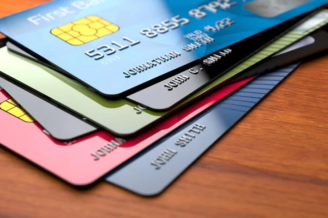Balance Transfer Credit Cards: Everything You Need to Know
Learn everything about balance transfer credit cards: how they work, their benefits, and tips to save on interest while managing your debt effectively.
Understand balance transfer credit cards

Imagine a way to get rid of high interest rates on a credit card and reorganize your finances without so much hassle. Sounds good, right? That’s exactly what balance transfer credit cards offer. They are like a breather for those trying to get out of the red, offering lower rates or even 0% interest for a promotional period.
In this article, you can find out all about balance transfer cards: what they are, how they work, advantages, disadvantages and, of course, whether they really are the solution you’re looking for. Are you ready? Let’s get started!
What are balance transfer credit cards?
These cards are designed to help those who are already carrying debt on another credit card. The idea is simple: you transfer the debt from a high-interest card to another card that offers lower interest rates, often as low as 0%, for a specific period (usually between 6 and 18 months).
This gives you an opportunity to pay off your debt without the interest continuing to snowball. It’s a great strategy for those who want to catch up on their bills, but it requires planning.
How does the balance transfer work?
At first, there are a few steps you need to consider to better understand how it works. First, look for a card that offers a long promotional period and low transfer fees.
Many US banks and card issuers, such as Chase Freedom Unlimited or Citi Simplicity, are popular options.
Once you’ve been approved for the card, you’ll see what your credit limit will be. Then use the new card to transfer the balance from the old card. Remember that there may be a transfer fee, usually 3% to 5% of the amount transferred.
Now it’s time to focus! Make regular payments and try to pay off the debt before the promotional period ends, because after that, standard interest rates may kick in.
What are the benefits?
These cards are a powerful tool, but the positive impact will depend on how you use them. To help you understand the advantages, we’ve listed the main benefits of this type of card below. Check them out below!
- Interest savings: this is the biggest advantage. With 0% interest for a promotional period, you can pay off your main debt faster;
- Simplification of bills: instead of dealing with several different debts and interest rates, you concentrate everything on a single card;
- Chance to reorganize your financial life: if used with planning, it can be the kick-start to getting out of debt.
How do I choose the right credit card?
Not all balance transfer cards are created equal. To choose the best one for you, keep an eye on these factors:
- Length of promotional period: Prefer cards that offer at least 12 months at 0% interest;
- Transfer fees: Compare different cards and see which offers the lowest fee;
- Fees after the promotional period: Read the details of the interest that will be charged after the promotional period is over.
A tip: the official website of the Consumer Financial Protection Bureau has great resources to help US consumers make more informed financial decisions.
What’s the best option for you?
That’s the million-dollar question (or maybe a few thousand, depending on your debt). A balance transfer card could be the perfect solution if:
- You have significant debt on high-interest credit cards;
- You are able to pay off the debt before the promotional period ends;
- You are committed to not using the card to accumulate more debt.
But if you’re not sure you’ll be able to pay everything off in time, it might be worth exploring other options, such as fixed-rate personal loans or even negotiating directly with the bank.
The bottom line
Balance transfer credit cards are a powerful tool for those who want to get out of debt and regain financial control. But like any tool, success depends on how you use it. Plan, compare the options and be disciplined with your payments.
And remember: making smart financial decisions starts with information. So, if this text has helped you, share it with someone who could benefit from it too. Good luck and see you next time!





